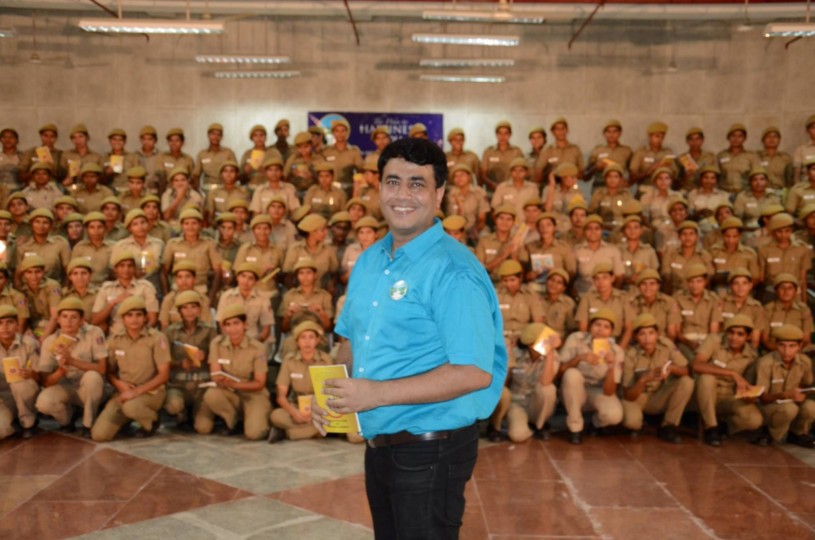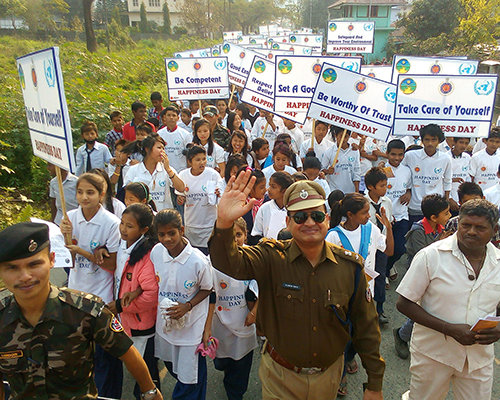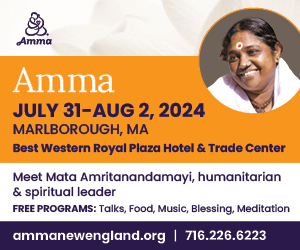NEW DELHI–Rohit Sharma, a New Delhi real estate business owner, grew up in India where rape cases doubled between 1990 and 2008 and murders have more than tripled over the course of 60 years.
Sharma will tell you what goes without saying: his people are losing their morality.
But in 2007, Sharma found The Way to Happiness, a nonreligious commonsense moral code written by L. Ron Hubbard which lays out 21 fundamental precepts—“Don’t Be Promiscuous,”“Respect the Religious Beliefs of Others” and everything in between—along with why and how one should apply these in one’s life. Translated into 114 languages, the book is used in schools, businesses, prisons and city streets and has been shown to reduce crime where distributed.

The Way to Happiness had a profound effect on Sharma, inspiring him to test out what it could do for others. He delivered his first seminar, employing the award-winning The Way to Happiness book-on-film and Public Service Announcements, to 100 students in Vinay Nagar Bengali School.
The students, much to the surprise and delight of their teachers, listened with rapt attention. Many vowed afterward never to violate the precepts again.One student wrote, “I will start living my life on these principlesbecause, after seeing this, I realized that everyone has to follow the rules to become a disciplined person and be successful.”

Sharma was soon delivering the lecture in schools across New Delhi and, at an annual teacher’s conference, trained some 600 teachers and principals, an event which made headlines in the Hindustan Times. Before long,he had trained more than 2,500educators who, in turn, brought The Way to Happiness to more than 110,000 students in some 900 schools.
Sharma next approached the police. After receiving a presentation on the program, the New Delhi Deputy Commissioner ordered 10,000 copies of The Way to Happiness with custom covers,bearing the police’s logo proudly below its title. The booklets were such a hit, Sharma received direction to bring the workshop to police in every district of the city.
One unit—the New Delhi Traffic Division—decided to make The Way to Happiness the core of their citywide program to reform drunk drivers and traffic offenders. The Traffic Division, in turn, delivered the program to more than 55,000, many of whom were so pleased with what they learned they thanked the police for the “penalty.”
In honor of the United Nations Day of Happiness, Sharma and the New Delhi police teamed up to host a massive parade, attended by some 2,500. Launched by a member of Indian Parliament, the parade aired to 60 million viewers onDD1 National TV, the top rated TV-network in the country.
In total, Sharma has trained more than 3,000 police, and every branch of Indian law enforcement has now embraced The Way to Happiness. Hehas further distributed more than 58,000 booklets across 16 states of India, reaching more than 70 million people with the help of national media.
Sharmanext plans to travel to each of India’s 29 states, introducing the campaign to all schools and police departments in his bid for a better India.
“I have had one hundred percent success wherever I have gone with The Way to Happiness,” he says.
Immensely popular since its first publication in 1981, some 115 million copies of The Way to Happiness have been distributed in 115 languages in 186 nations and the campaign has been embraced by more than 250,000 individuals and groups.
The Way to Happiness is one of a number of humanitarian programs supported by the Church of Scientology. The Scientology religion was founded by L. Ron Hubbard, and the first Church of Scientology was formed in Los Angeles in 1954. Since then, the religion has expanded to more than 11,000 Churches, Missions and affiliated groups, with millions of members in 167 countries.















Scientology is a cult. Don’t believe anything that they say.